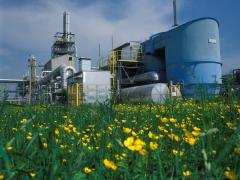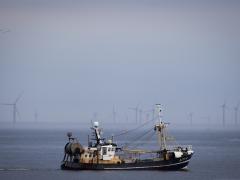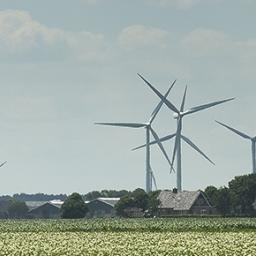Roadmap to a climate-proof Netherlands
In the spatial planning of the Netherlands it becomes important to consider climate change. The main challenges to be incorporated in spatial strategies are: flood protection, fresh water availability, and reducing the vulnerability of nature, urban areas, and transport and energy networks. A consistent long-term spatial strategy requires coordination between various policy terrains, and coherence in decision making. Especially in developing urban areas, opportunities exist for reducing this vulnerability, for reducing greenhouse gas emissions, and simultaneously improving the living environment. These developments will not take place by themselves.
Spatial planning reduces vulnerability to climate change
Climate change causes multiple effects – also in the Netherlands. The temperature and sea level are rising and patterns of rainfall and river discharges are changing. The rate of climate change itself and its possible impacts are surrounded with substantial uncertainties. Acknowledging the uncertainties, the main challenges to be incorporated in a long-term spatial strategy for the Netherlands are: long-term protection against flooding, securing the availability of fresh water, and reducing the vulnerability of nature, urban areas, and transport and energy networks.
A consistent long-term spatial strategy requires coordination between various policy terrains, and coherence in decisionmaking and policy implementation at national, provincial and municipal levels. The actual policy agenda, in the short term, already provides chances for reducing the vulnerability of the Netherlands to climate change. Especially in restructuring and developing new urban areas, opportunities exist for reducing this vulnerability (adaptation), for reducing greenhouse gas emissions (mitigation), and simultaneously improving the quality of the living environment. Although the expertise and technologies are available, these developments will not take place by themselves.
Erratum
The report includes two corrections on an earlier version. These are i) correction of the size of the Dutch area below sea level and that of the area sensitive to flooding (page 11, first paragraph); ii) figures in Table 1 (page 14) on climate change in the Netherlands have been made consistent with other PBL publications and a new reference has been added (Klein Tank and Lenderink, 2009). For the correction on the area below sea level and that sensitive to flooding, see:
Authors
Specifications
- Publication title
- Roadmap to a climate-proof Netherlands
- Publication date
- 9 December 2009
- Publication type
- Publication
- Publication language
- English
- Product number
- 92444




